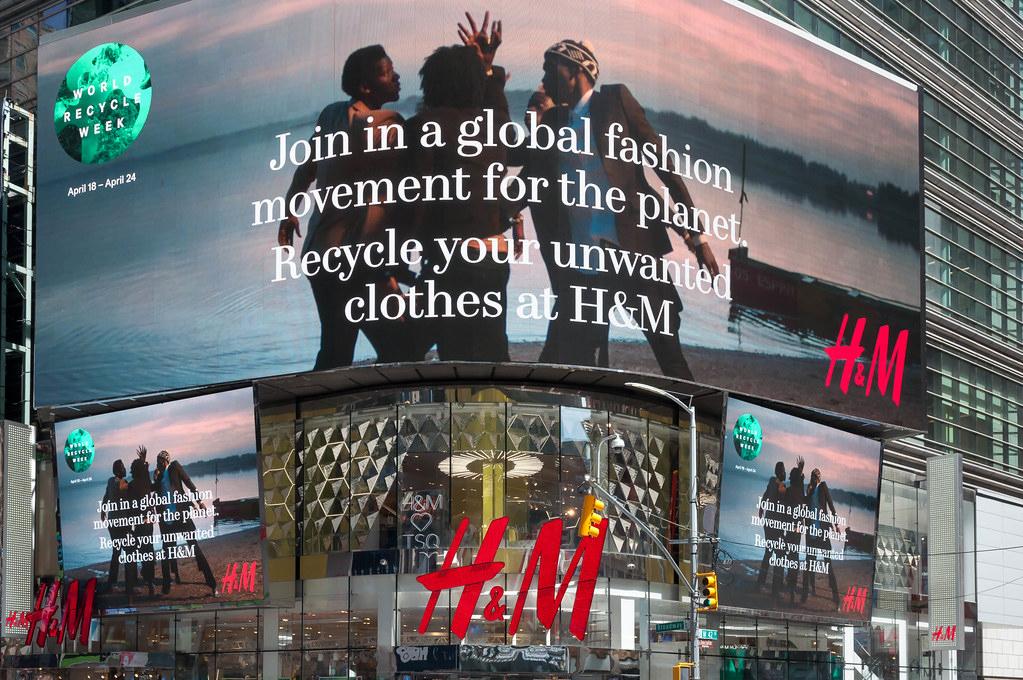SUSTAINABILITY OR MARKETING SCHEME?
The fashion industry is responsible for 10 percent of the global carbon footprint, according to the Environmental Protection Agency (EPA).
Furthermore, the EPA estimates that the average American will throw away about 81 pounds of clothing this year. All of this 81 pound load will eventually reside in the ever-growing monstrosity of this country’s vast network of landfills.
It is no secret that clothing consumption has dramatically risen in the past 20 years or so, and so-called fast fashion can take at least some of the blame for America’s closets being stuffed to the brim.

Since the clothing is so cheap and new trends are constantly being added, retailers such as H&M, Zara and Forever 21 attract millions of shoppers worldwide every single day. However, while perhaps fashionable and affordable, buying from these fast fashion brands comes at a high cost.
While shopping at the mall with friends, perfectly curated ads and decorated storefronts are presented on all sides. Most people may see stores that claim to be eco-friendly and care about the earth, but what goes on behind the scenes?
The Sad Truth
With the rise of fast fashion, the industry makes it possible for shoppers to buy an obscene amount of clothes not built to last which are piling up in our landfills.
And while fast fashion companies may be promoting an image of sustainability, they are not always following these principles.
Under the guise that it is concerned about sustainability, fast-fashion giant H&M markets itself as a conscious brand in order to boost sales.”
H&M was among the first to stock a “conscious” sustainable fashion collection in its stores and it have implemented a recycling program where you can return clothes from any brand and get 15 percent off your purchase.
Although these initiatives are progressing towards a good place, H&M is still a brand that
operates under an unsustainable, fast-fashion model that seems to not care about anything beyond pulling in revenue.
For instance, H&M has recently come under fire for allegedly exploiting its factory workers.
According to Reuters, based on interviews with 62 H&M factory workers, they are not being paid anything near a fair living wage that would allow them to cover their families’ basic needs.
Two other reports, this time from the workers’ rights organization Global Labor Justice, single out H&M and Gap, highlighting the alleged abuse female garment workers face daily. The reports list numerous workplace malpractices, including forced overtime, preventing women from taking bathroom breaks and a misuse of power to pursue sexual relationships.
Although allegations, these statements greatly contrast with H&M’s claim of being a conscious brand.
What Can You Do?
Although these claims are appalling, there are some things you can do to be more conscious with how you shop.
If you have clothing you find is sitting in the back of your closet unworn, donate it to thrift shops or flea markets. This way, no article of clothing ends up in a landfill because it is being truly recycled as it ends up in someone else’s closet to be reused.
Selling your clothes is another great way to reduce your carbon impact on the earth. With apps like Poshmark, Vinted and Depop, you can easily avoid adding more to landfills and make money at the same time.
Another more sustainable way to shop is online. According to a study, 22 percent of a garment’s carbon impact comes from the process of a shopper driving to the store to purchase it. If you live in a city where you can walk, bike or take public transportation, do that!
Although fast fashion has become a global epidemic that is destroying the earth and seems to use exploitative labor conditions, everyone can learn to be more conscious about how and where to shop to help stop the cycle of treating our planet like a garbage bin.













